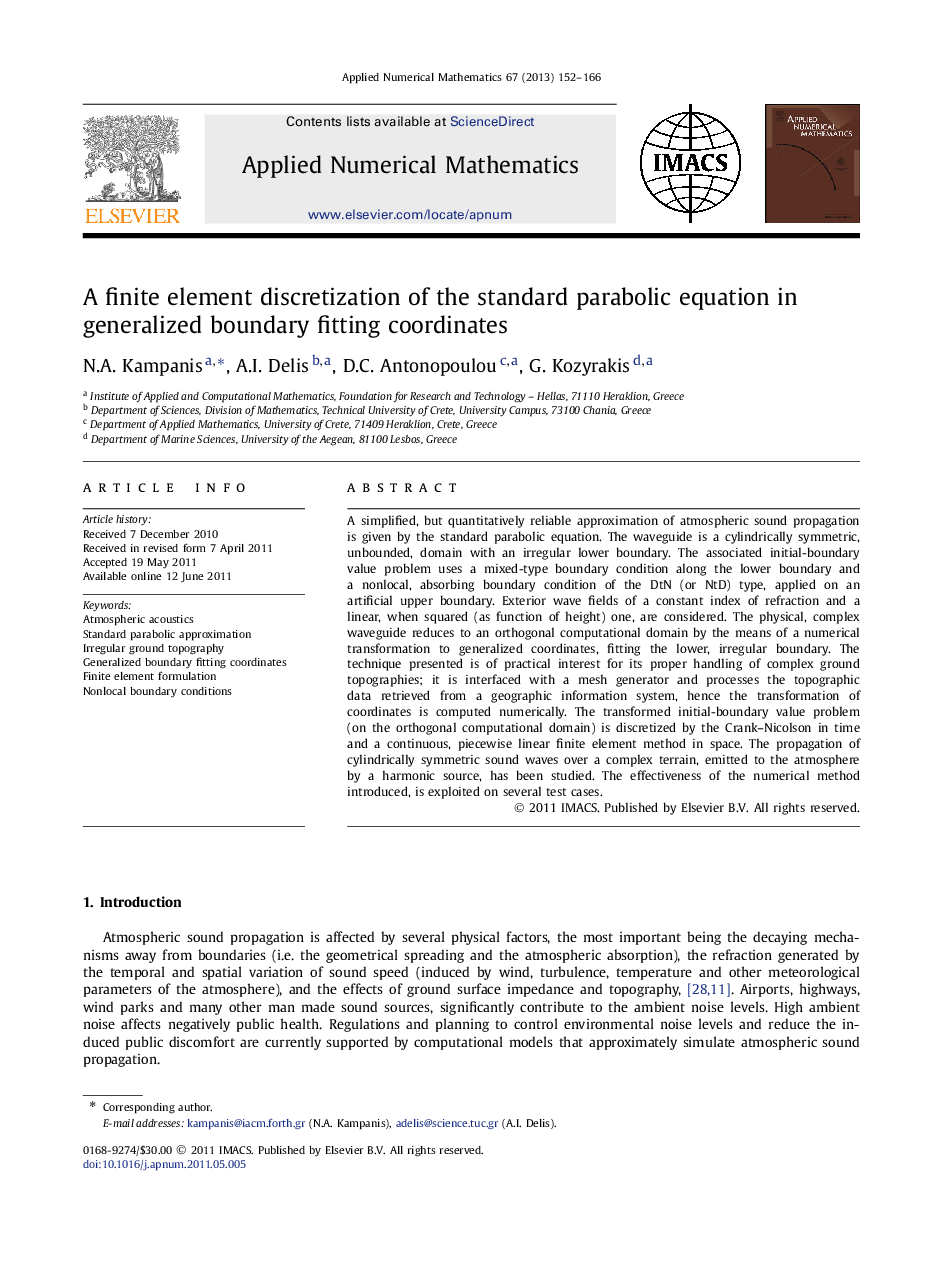| Article ID | Journal | Published Year | Pages | File Type |
|---|---|---|---|---|
| 4645290 | Applied Numerical Mathematics | 2013 | 15 Pages |
A simplified, but quantitatively reliable approximation of atmospheric sound propagation is given by the standard parabolic equation. The waveguide is a cylindrically symmetric, unbounded, domain with an irregular lower boundary. The associated initial-boundary value problem uses a mixed-type boundary condition along the lower boundary and a nonlocal, absorbing boundary condition of the DtN (or NtD) type, applied on an artificial upper boundary. Exterior wave fields of a constant index of refraction and a linear, when squared (as function of height) one, are considered. The physical, complex waveguide reduces to an orthogonal computational domain by the means of a numerical transformation to generalized coordinates, fitting the lower, irregular boundary. The technique presented is of practical interest for its proper handling of complex ground topographies; it is interfaced with a mesh generator and processes the topographic data retrieved from a geographic information system, hence the transformation of coordinates is computed numerically. The transformed initial-boundary value problem (on the orthogonal computational domain) is discretized by the Crank–Nicolson in time and a continuous, piecewise linear finite element method in space. The propagation of cylindrically symmetric sound waves over a complex terrain, emitted to the atmosphere by a harmonic source, has been studied. The effectiveness of the numerical method introduced, is exploited on several test cases.
